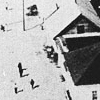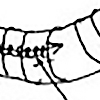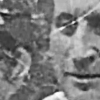The Hydrogen Bomb: 1950-1956
The “Installation” was a secret city in the central Volga region of the USSR where a special design bureau was creating nuclear weapons. Even the name of the city – Sarov, once the site of a famous Orthodox monastery – was secret for some forty years. Tamm and Sakharov moved to the Installation in spring 1950. While the theoretical group headed by Zeldovich continued to work on the Truba design, Tamm’s team worked on Sakharov’s Sloyka. The latter provided the first Soviet H-bomb, successfully tested on 12 August 1953.
“I couldn’t ignore how horrible and inhuman our work was. But the war that had just ended was also inhuman. I wasn’t a soldier in that war, but I felt like one in this scientific and technological war. (Kurchatov himself said we were soldiers, and this was no idle remark.)”
Parallel to this effort, in 1950 Sakharov and Tamm proposed an idea for a controlled thermonuclear fusion reactor, the TOKAMAK (abbreviated from the Russian phrase for Toroidal Chamber with Magnetic Coil). This invention originally was considered to be related to weaponry, but in 1956 Kurchatov disclosed this and some other formerly secret Soviet ideas during a visit to the British nuclear center in Harwell. The research on controlled fusion subsequently became a declassified and open field, and an arena for international competition for building a practically unlimited peaceful source of energy. TOKAMAK is currently regarded as one of the top candidates.
After the thermonuclear test of 1953 Tamm returned to Moscow to resume academic work at FIAN. Sakharov was elected full member of the Soviet Academy of Sciences, awarded the first of his three Hero of Socialist Labor Medals, as well as Stalin Prize and a luxurious dacha (country house). He assumed Tamm’s position at the Installation and made the key contribution to the Soviet Union’s first full-fledged H-bomb, tested in 1955.




